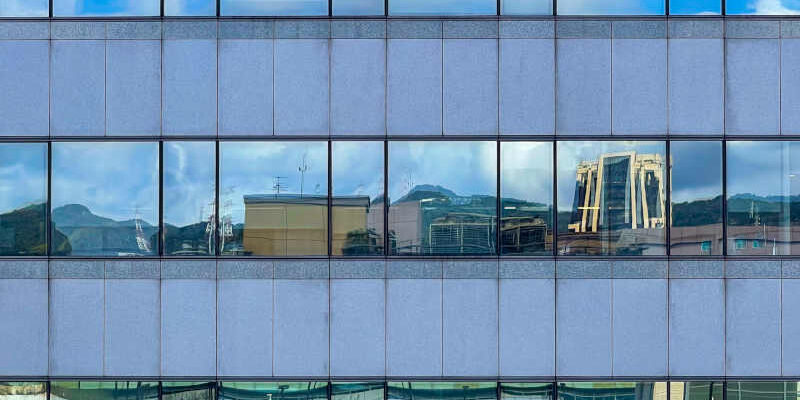A window wall is like a glass skin added to the side of a building, usually a reinforced concrete structure that is constructed first. A curtain wall might have one or more levels, like a skyscraper, or it can be as modest as a typical storefront. The glass wall started with the steel curtain wall frames that were constructed in buildings in the early 1900s. Because the steel was so heavy, the curtain walls could only be many storeys high. Aluminum is employed in modern curtain wall techniques, making them lighter and more portable. In order to create some really distinctive architectural designs, aluminum can be employed in a wide variety of shapes. With aluminum, unique shapes can be created. For the purpose of attaching the glass to the aluminum frames with an extremely airtight seal that guards against moisture and air intrusion, gaskets and other glazing materials have been created. A window wall can be built using any one of numerous different curtain wall systems.
Stick Systems
Long elements known as sticks are typically put between floors vertically and between vertical parts horizontally in the majority of curtain wall systems built now as well as in the past. Most of the framing components can be built beforehand in another place. After these components are put on the building, the glazing and curtain wall frame are put in place. During transit and installation, this will prevent the glazing from being damaged or ripped.
Ledge Systems
The stick and ladder curtain wall systems are very similar. Alternatively, they could be built off-site before being moved, perhaps in a workshop or some other place. The process for building a ladder-style curtain wall system is remarkably similar. An excellent way to understand how a ladder system is built is to visualize an aluminum ladder being hung on the side of a building. The installation of the glazing and glass happens when the ladder curtain wall system is attached to the building.
Unitized Curtain Wall Systems
One unit is used to build a unitized curtain wall system. Each module stands alone and is complete. Before being transported and placed on the structure, the unit has the glazing installed. A shorter building period is possible with this kind of curtain wall system. The window may be included with the unit in some circumstances. Construction of the component will begin elsewhere, followed by transportation and installation at the structure’s location.
Benefits to Construction of Window Walls
There are many benefits to modern curtain wall construction. The glass walls will utilize the sun’s natural lighting, which is one of the biggest benefits. Curtain wall building has seen a wide variety of techniques developed that have made it possible to build curtain walls in places where they were previously impractical. In windy, hurricane-prone, and earthquake-prone places, innovations have been made that will allow curtain walls to move and be stressed.





